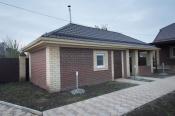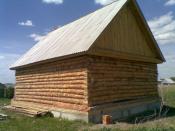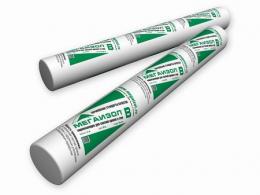Search
Login
Recommended
Vapor barrier, what is it?
Properly executed wall insulation makes the house energy efficient. For a comfortable stay, energy saving is of great importance.
Content
- Why does the insulation lose its properties? video
- Which side is the vapor barrier attached to?
- Why is a windproof film needed?
- How is vapor barrier stacked when warming floors? video
- Do you need vapor barrier for timber and log walls?
Why does the insulation lose its properties?
In accordance with our climatic conditions, each living room needs to be insulated.
People live indoors, in winter, for a comfortable stay, this room needs to be warmed.
When heated, indoor air decreases its relative humidity, but the paradox is that the absolute humidity due to the life of people’s activities can increase.
Wet air vapors tend to go outside.
Thus, heat transfer occurs.
Heat transfer can be calculated by knowing the value of thermal resistance.
Resistance to vapor permeation - this is the ratio of the thickness of the insulation layer to the coefficient of vapor permeability of the insulation material.
Calculating the resistance to vapor permeation of the room, for the insulation of which several different types of insulation are used, the resistance to vapor permeation is obtained by summing all the layers of insulation.
Basalt cotton wool has a low coefficient of resistance and water vapor in winter easily overcomes a layer of basalt cotton wool.
The most unpleasant moment of such air penetration is that moisture condensation occurs at the border with the outer skin.
The insulation gets wet and loses all its properties, the whole room dries and becomes unusable.
Which side is the vapor barrier attached to?
A vapor barrier film prevents the formation of condensation under the skin.
The vapor barrier is laid on the inside, the one that faces a warm room.
In the construction market, there is currently a large assortment of vapor barrier films.
Ideally, bona fide manufacturers apply a scheme and conditions for the use of this vapor barrier to each roll.
To prevent droplets from collecting on the vapor barrier, a rough surface is created on one side of the film.
This rough surface of the film, during installation, should be turned to the inside of the room.
The film itself is attached to the walls using the bars of the crate, the use of the crate allows you to create an air gap under the panel of the inner lining.
When installing a vapor barrier film, special attention must be paid to the joints of individual film panels. Joints must be airtight. Tightness is achieved by gluing joints with special adhesive tape.
Why is a windproof film needed?
The windproof film, unlike vapor barrier, is designed to let water vapor pass outside and is mounted under the outer skin, and an air gap should also be created.
Thus, the windproof film should contribute to the drying of the insulation layer and the entire frame structure if they get wet.
How is vapor barrier stacked when warming floors?
Insulated floors, namely: floor and ceiling - are frame structures.
From the inside, vapor barrier is vital for these frame structures.
Therefore, a vapor-tight film is placed under the floor boards and over the skin of the ceiling with an air gap.
Do you need vapor barrier for timber and log walls?
Very often the question arises as to whether vapor barrier is necessary for timber and log walls.
According to SNIPs, for two-layer external walls, if the vapor permeation resistance is more than 1.6 (m2. H. Pa \\ mg), then protection against the penetration of water vapor is not necessary.
Walls of beams having a thickness greater than 96 mm. meet these requirements.
But, unfortunately, this is only theoretically.
In practice, this is not always true.
In winter, the owner will not dismantle the lining and watch how the air behaves there and if the insulation is damp.
Of course, if you do not completely finish the walls under the roof (and there is no rainfall), you can observe the state of your warm cake in the cold season.
If the shrinkage of the chopped walls of the house occurred evenly, then with regard to vapor barrier, the issue is solved very simply.
It is not needed, since there are no cracks between the logs and warm air does not leave the room.
But there are cases when during shrinkage, individual crowns freeze and large gaps form.
And this happens in the case, for example, if the walls of a house made of timber are mounted on long through pins made of reinforcement, and not as expected - on short pins.
Such a house requires reliable vapor barrier from the inside and external insulation.
Otherwise, in winter the insulation will get wet due to the condensation of water vapor that leaves the room along with warm air.
Such bugs during construction are fraught not only with huge heat losses, but also the service life of the chopped walls and the whole building is reduced.





